The Ultimate Workout Routine for Women
If you’re like most women, you don’t just want to “exercise more.”
You want your body to look a certain way.
You want to be lean but not scrawny. You want your arms and shoulders to look defined, not stringy.
You want a flatter, firmer stomach. You want strong legs and glutes that fill out your jeans in all the right ways.
And you’d like to get there without living in the gym, starving yourself, or playing “workout roulette” on social media.
The problem is, most fitness advice aimed at women does exactly the opposite. It’s a mashup of endless cardio, “toning” workouts, complicated exercise circuits, and confusing diet rules.
Follow that long enough and you don’t get the athletic, defined look you’re after—you get tired, hungry, and “skinny fat” (not much muscle, still more body fat than you want).
In this article, you’re going to learn what actually is the best workout routine for women, why training in this way is so effective, what kind of results to expect, and more.
Key Takeaways
- The best workouts for women are built around heavy, compound strength training, not lightweight “toning” circuits or endless cardio.
- Building muscle is what gives your body shape, curves, and definition—and it also makes staying lean much easier.
- You don’t need a 6-day gym schedule. Training three days per week, getting stronger over time, and recovering well works for nearly everyone.
- Nutrition still drives your results. Eating enough protein, managing calories, and following a sensible macro setup is paramount.
- You don’t need supplements to transform your physique, but protein powder, creatine, and pre-workout can help you get there faster.
- What Is the Best Workout Routine for Women?
- Strength Training for Women: The Foundation of Your Workout Routine
- How Often Should Women Lift Each Week?
- The Best Full-Body Workout Routine for Women (for Home or Gym)
- Cardio for Women: How to Combine It with Strength Training
- What Results Can Women Expect from This Workout Routine?
- Simple Nutrition Guidelines to Support Your Workout Plan for Women
- The Bottom Line on Creating a Workout Routine for Women
- FAQ #1: What is the best gym routine for women?
- FAQ #2: Can you get in shape in 3 months as a female?
- FAQ #3: What exercise burns the most fat for females?
- FAQ #4: How many days a week should a woman work out?
- FAQ #5: Can women build muscle without getting bulky?
- Want More Content Like This?
Table of Contents
+What Is the Best Workout Routine for Women?
There isn’t one magic workout that works for every woman forever.
But there is a simple pattern that works for almost everyone:
- Heavy strength training built around compound exercises: Think squats, deadlifts, hip thrusts, presses, and rows—movements that train a lot of muscle at once and let you gradually add weight over time.
- Some cardio: Mainly for health and calorie burning, not punishment. Walking, cycling, or one or two HIIT sessions per week is plenty for most women.
- Sufficient rest and recovery: Enough that you can actually push hard when you train. You don’t need 7 days per week of high-intensity exercise. In fact, that’s usually why people burn out.
- A simple, repeatable structure: The women who make the best progress have a clear weekly plan (not a random collection of workouts), follow it for weeks or months, and focus on doing it better, not constantly changing it.
Strength Training for Women: The Foundation of Your Workout Routine
Scroll through fitness content aimed at women and you’ll see a lot of core work, banded or bodyweight exercises, and lightweight circuits. Those things can have a place, but they shouldn’t be the foundation of your training.
The workouts that actually transform your body all have one thing in common:
They prioritize heavy, compound strength training.
Why?
Because strength training builds muscle, which creates curves, shape, and definition, and makes maintaining a lean physique easier.
Strength Training Builds Muscle
If you want to build muscle (and I’ll explain why you absolutely should soon), nothing beats heavy strength training. Unfortunately, many women’s workouts miss this point and focus on things like getting a “pump,” lifting very light weights, or sticking only to bodyweight or banded exercises.
While a pump can contribute to muscle growth, it’s far less important than getting progressively stronger over time. That’s the real driver of muscle gain, and without it, you’ll eventually stall no matter how hard your workouts feel.
You also can’t “tone” or “tighten” a muscle—you can only build it. And the best way to build muscle is to lift heavy weights.
The idea that women should avoid barbells or machines is nonsense, too. Effective training uses whatever tool produces the best result, whether that’s a barbell, dumbbells, cables, machines, body weight, or bands.
Muscle Creates Shape
Building muscle is what gives your body curves, shape, and definition (as long as you’re lean enough, which we’ll discuss soon).
Even if you’re at a healthy body weight or have a normal body mass index (BMI), you can still have an unimpressive physique if you don’t have much muscle. The comparison below illustrates this well:
Both girls have a similar body fat percentage, but the girl on the left is “skinny fat” (undermuscled), while the girl on right looks toned and shapely because she has more muscle.
And, no—lifting heavy weights and building muscle won’t “make you bulky.”
It’s very hard for women to build a big, bulky body. It doesn’t happen by accident or overnight—it takes years of intense training and eating. Even then, women can’t build as much total muscle as men unless steroids are involved.
At bottom, if you want a lean, athletic body with clear lines and curves, you need to build muscle. Staying fairly lean enhances these results even further, and strength training helps with that too . . .
Muscle Supports Fat Loss
Strength training doesn’t just reshape your body by building muscle—it also plays a major role in fat loss.
Compound exercises like squats, deadlifts, rows, and presses produce a significant increase in metabolic rate, which can make staying lean long-term easier.
Building muscle has benefits of its own:
- A muscular body burns more calories resting and moving than a similarly-sized fat one.
- Muscle supports good metabolic health, which is vital for maintaining a healthy body fat percentage.
- Muscle tissue alters the expression of certain genes that accelerate fat burning.
In other words, strength training doesn’t just help you look better—it helps your body work better, making fat loss and weight maintenance far more sustainable.
How Often Should Women Lift Each Week?
Most women don’t need (or want) a schedule that revolves entirely around the gym. That’s why, for anyone with a normal work and family life, lifting three times per week is ideal.
Training three days per week lets you work every major muscle group often enough to build strength and muscle efficiently, and also gives you plenty of non-gym time so you’re not constantly sore, rushed, or rearranging your life around your workouts.
And if you want to include cardio—whether for fat loss or health—it’s much easier to slot those sessions around a three-day lifting plan than a five- or six-day one.
The Best Full-Body Workout Routine for Women (for Home or Gym)
Now that you know why strength training works and how often you should lift, let’s put it all together.
The lifting program for women below is simple, effective, and easy to follow whether you train in a gym or at home with basic equipment. Each workout centers on heavy, compound movements that train a lot of muscle at once and make it easy to progressively get stronger over time.
I’ve also included exercise substitutions in case you can’t—or don’t want to—perform any of the original movements.
Do these three workouts once per week, in the order given, leaving at least one rest day between each session.
(And if you’re unsure how to do any of the exercises, just click the name for a detailed demonstration.)
Workout #1
- Barbell Deadlift: 3 sets | 8–10 reps | 3–5 min rest
- Push-up: 3 sets | 8–10 reps | 3–5 min rest
- Lunge: 3 sets | 8–10 reps | 2–3 min rest
- Overhead Triceps Extension: 3 sets | 8–10 reps | 2–3 min rest
Exercise Substitutions:
- Barbell Deadlift: Dumbbell deadlift or Romanian deadlift
- Push-up: Knee push-up or dumbbell bench press
- Lunge: Bodyweight squat or goblet squat
- Overhead Triceps Extension: Diamond push-up or dumbbell kickback
Workout #2
- Back Squat: 3 sets | 8–10 reps | 3–5 min rest
- Incline Dumbbell Bench Press: 3 sets | 8–10 reps | 3–5 min rest
- Lat Pulldown: 3 sets | 8–10 reps | 2–3 min rest
- Hip Thrust: 3 sets | 8–10 reps | 2–3 min rest
Exercise Substitutions:
- Back Squat: Bodyweight squat or goblet squat
- Incline Dumbbell Bench Press: Push-up or feet-elevated push-up
- Lat Pulldown: Inverted bodyweight row or one-arm dumbbell row
- Hip Thrust: Leg curl (machine or Nordic) or glute bridge
Workout #3
- Overhead Press: 3 sets | 8–10 reps | 3–5 min rest
- Romanian Deadlift: 3 sets | 8–10 reps | 3–5 min rest
- One-Arm Dumbbell Row: 3 sets | 8–10 reps | 2–3 min rest
- Dumbbell Side Lateral Raise: 3 sets | 8–10 reps | 2–3 min rest
Exercise Substitutions:
- Overhead Press: Dumbbell shoulder press or banded shoulder press
- Romanian Deadlift: Leg curl (machine or Nordic) or glute bridge
- One-Arm Dumbbell Row: Seated cable row or banded row
- Dumbbell Side Lateral Raise: Cable side lateral raise or upright row (barbell, dumbbell, or banded)
Cardio for Women: How to Combine It with Strength Training
If you want to lose fat as quickly as possible, research shows that combining strength training and cardio works better than doing either alone.
Your goal, however, is to compliment your strength training, not interfere with it. And that means limiting how and when you do cardio.
Here’s what I recommend:
- Do 2–3 sessions of low- or moderate-intensity cardio workouts per week (e.g., walking, swimming, or rucking) for 20–60 minutes each.
- Do one HIIT workout weekly if you enjoy it.
- Limit total cardio to 2–3 hours weekly.
- Do cardio and weightlifting on separate days if possible. If you have to do both in one day, lift first and separate the sessions by at least 6 hours.
And if you want to learn more about how to combine strength training and cardio, check out this article:
Concurrent Training: The Right Way to Combine Cardio and Strength Training
What Results Can Women Expect from This Workout Routine?
If you’re new to strength training (or to proper strength training) and follow the advice in this article for 3–6 months, you can expect some pretty remarkable changes. And if you want proof, check out the before-and-after photos below.
With the help of Legion’s body transformation coaching service, all these women transformed their physiques in a similar timeframe by applying the same principles you’ve learned in this article:
Of course, your exact results will depend on where you’re starting and how consistent you are with your training and nutrition. But if you put the principles into practice, you’ll be amazed at how much progress you can make in a few short months.
Simple Nutrition Guidelines to Support Your Workout Plan for Women
So far, we’ve focused on what you should do in the gym to reshape your body. But if you don’t also adjust your eating habits, you’ll never get the results you want.
There are three parts to any effective nutrition plan for women who want to build muscle, lose fat, or improve their physique: calories, macros, and supplements.
Let’s look at each:
Calories
You calorie intake depends on your current body composition and training experience:
- If you’re new to strength training and have fat to lose, you can build muscle while getting leaner by eating 20–25% fewer calories than you burn daily. To learn exactly how many calories this is for you, use the Legion Calorie Calculator.
- If you’re a beginner who’s already fairly lean, you can build muscle while gaining minimal fat by eating 5–10% more calories than you burn daily.
- For more experienced lifters, the rules are more defined: you’ll need a calorie surplus to build muscle and a deficit to lose fat, usually done in separate phases, starting with whichever goal is most important right now.
Macros
No matter your calorie goal, aim to . . .
- Consume 1 gram of protein per pound of body weight each day
- Get 20–30% of your daily calories from fat
- Fill in the rest of your calories with carbs
This balance supports muscle growth, performance, and overall health.
If you want a deeper breakdown of how to calculate and dial in your macros, check out this article:
How to Calculate Your Macros for Weight Loss & Muscle Gain
Supplements
You don’t need supplements to build muscle and gain strength, but the right ones can help. Here are three worth considering:
- Protein powder: Eating enough protein is essential for building muscle. Protein powders like Whey+, Casein+ and Egg+ make hitting your target easier.
- Creatine: Creatine boosts muscle and strength gain, improves endurance, and reduces muscle damage and soreness. For a natural source of creatine, try Legion’s creatine monohydrate powder, creatine gummies, creatine capsules, or post-workout Recharge.
- Pre-workout: A quality pre-workout helps you train harder by boosting energy, focus, and athletic performance. Legion’s Pulse is available with or without caffeine.
Want even more specific supplement advice? Take the Legion Supplement Finder Quiz to learn exactly what supplements are right for you.
The Bottom Line on Creating a Workout Routine for Women
Women don’t need a complicated workout routine to change their bodies. A simple plan built around heavy, compound strength training, a few cardio sessions, and a sensible nutrition strategy will take you further than any trendy influencer workout you find online.
Lift three days per week. Get stronger over time. Eat in a way that supports your goals. Repeat.
Do that consistently and you’ll build muscle, lose fat, and develop the athletic, defined look you’re after—without living in the gym.
FAQ #1: What is the best gym routine for women?
Gym workouts for women should be built around heavy, compound strength training. Squats, deadlifts, presses, rows, and hip thrusts give you the biggest return on your effort, and a simple 3-day full-body plan that includes these exercises works for almost everyone.
FAQ #2: Can you get in shape in 3 months as a female?
You can greatly improve your physique in 3 months, especially if you’re new to proper strength training. All you need is a well-designed training routine and a sensible nutrition plan, like this one:
The Ultimate 3-Month Female Body Recomposition Workout Plan
FAQ #3: What exercise burns the most fat for females?
No single exercise “burns the most fat.” Fat loss comes from being in a calorie deficit. Strength training helps you keep muscle while you lose fat, and cardio can increase your calorie burn, but your overall routine and nutrition matter far more than any one movement.
FAQ #4: How many days a week should a woman work out?
Three days of strength training per week is ideal for most women. It’s enough to build muscle and get stronger without overwhelming your schedule or recovery. You can add 2–3 light cardio sessions if you want, but they aren’t mandatory.
FAQ #5: Can women build muscle without getting bulky?
Yes—and it’s actually difficult to get bulky. Women naturally build much less total muscle than men, even when they train just as hard. Lifting heavy will help you build the muscle that creates shape and definition, not bulk.
Want More Content Like This?
Check out these articles:
- The Perfect Push Day Workout Routine for Women
- Transform Your Pear-Shaped Body: Exercises & Diet Tips
- The Best Hourglass Body Workout Routine for a Slim Waist & Big Curves
The post The Ultimate Workout Routine for Women appeared first on Legion Athletics.
https://ift.tt/C9bPnQx November 26, 2025 at 07:00PM Legion Athletics
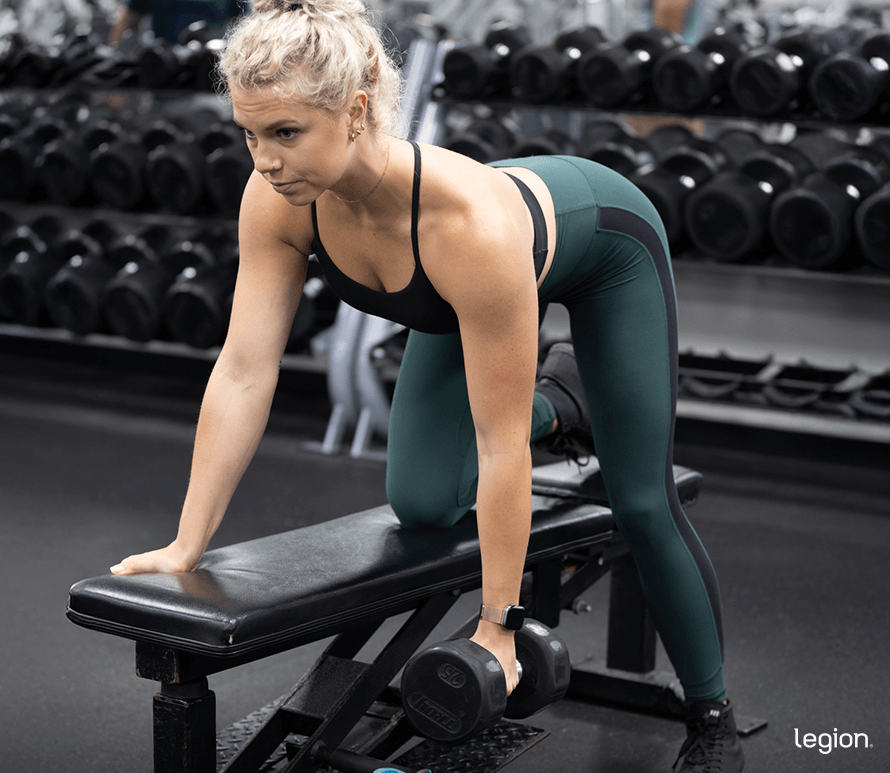
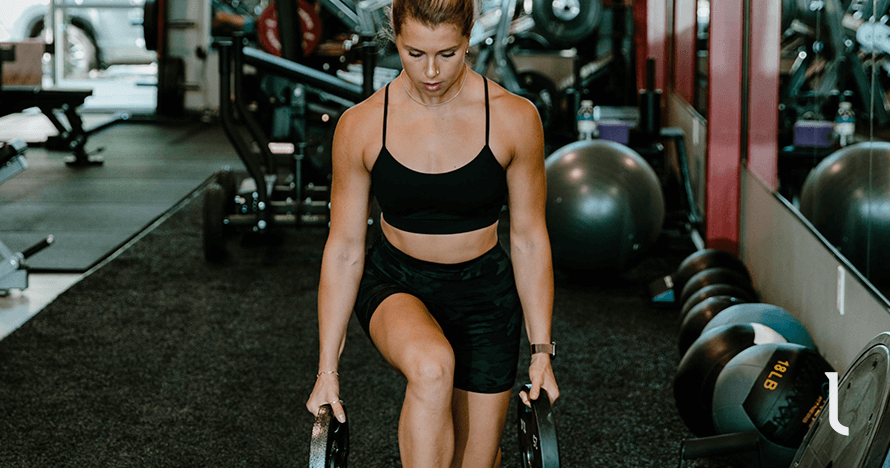
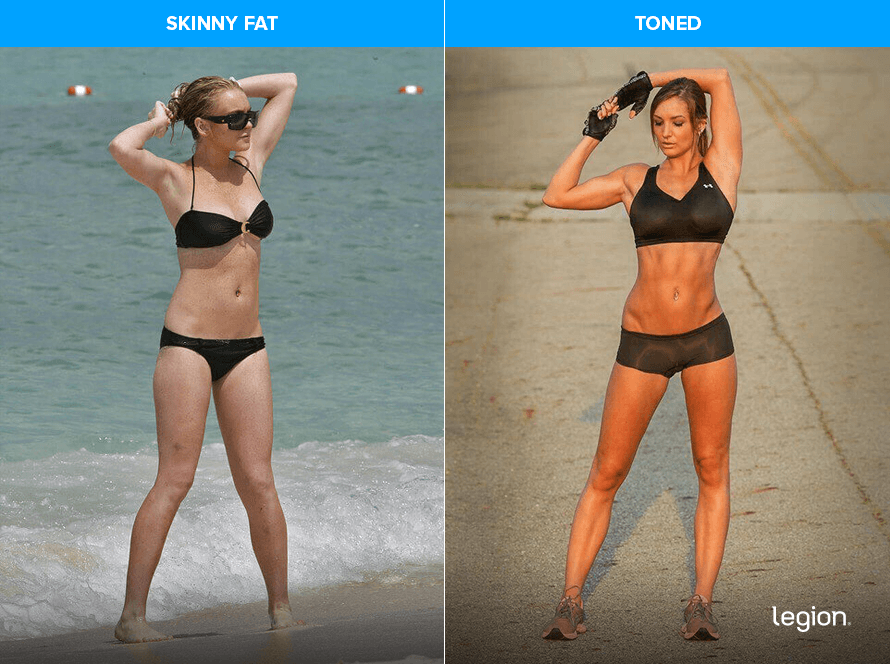
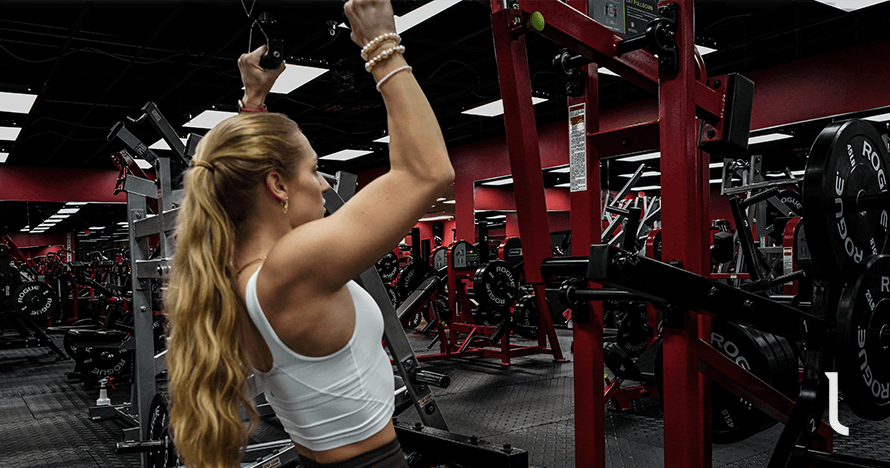


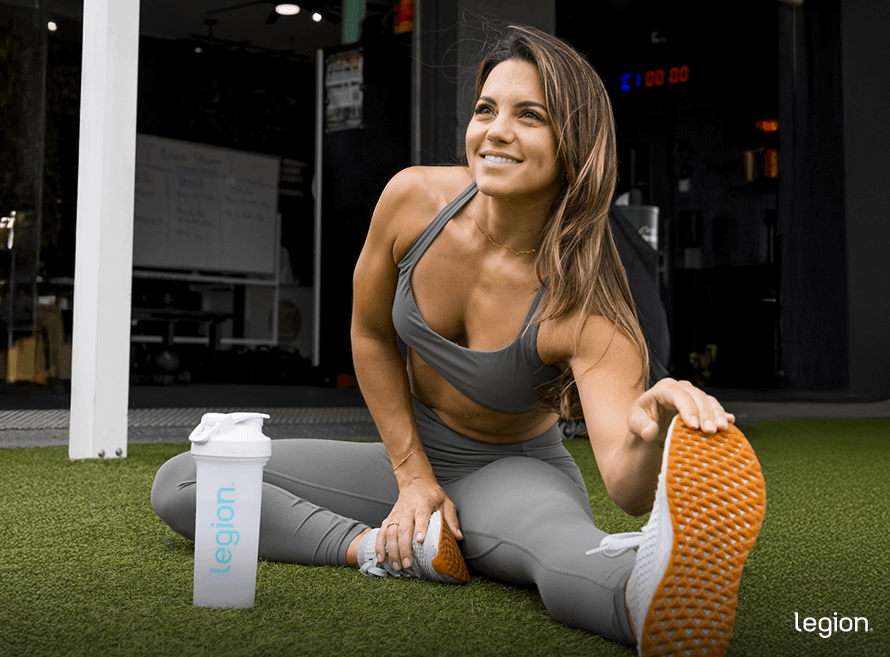
Comments
Post a Comment